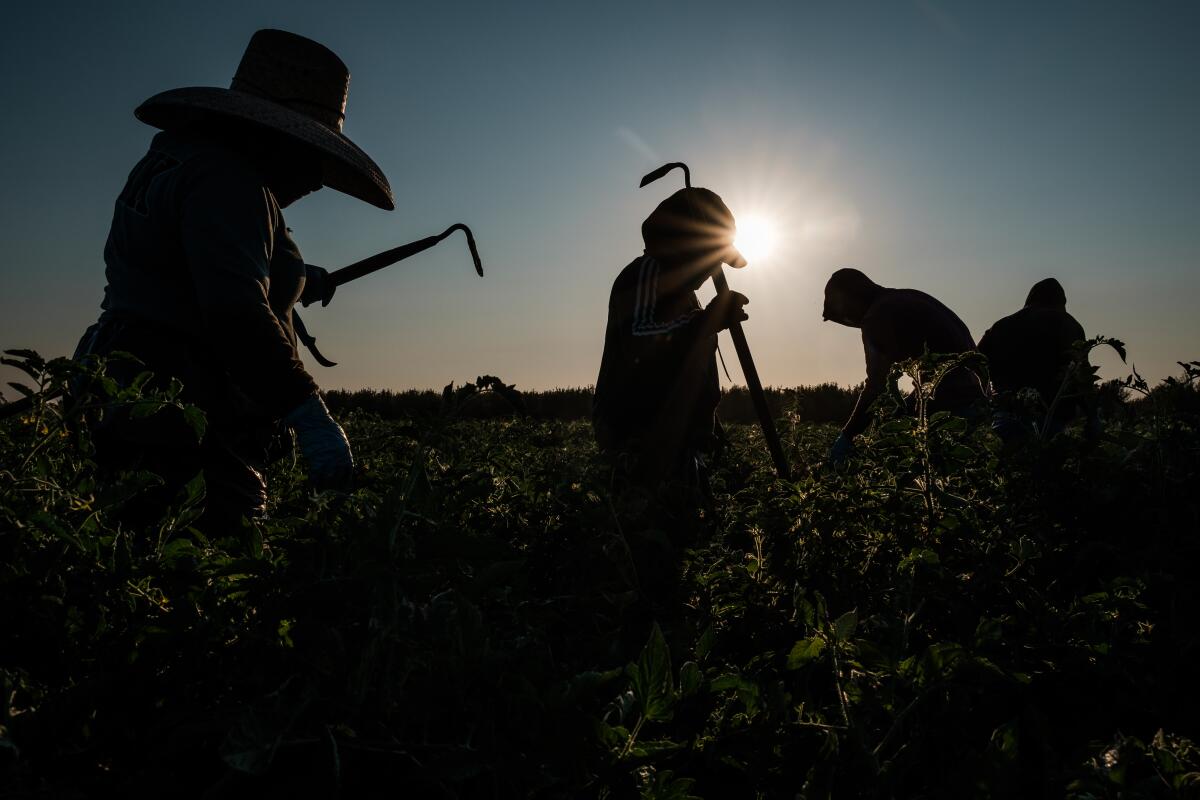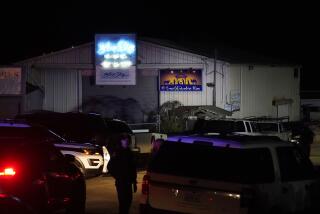Op-Ed: Will the Supreme Court stand up for the meager rights of farmworkers?

On Monday, the Supreme Court will hear a case about farmworker rights that may transform the constitutional meaning of property.
If you’re eating your fruits and vegetables, you can thank a migrant farmworker. Long after the campaigns for farmworker rights led by Cesar Chavez and Dolores Huerta in the 1970s, the workers who pick the nation’s produce remain incredibly vulnerable.
Most migrant farmworkers are from rural Mexico, almost half are undocumented, and increasing numbers are Indigenous people fluent in neither Spanish nor English. Migrant workers often spend only a few months or weeks at a particular farm, living either in housing controlled by growers or labor contractors, homes many miles from their workplaces, or in expensive, overcrowded rentals. Very few have smartphones or home internet, and many cannot read in any language. COVID-19 ripped through farmworker communities, with some employers firing workers who sought protections from the disease.
To protect this vulnerable group, California law gives unions a limited right to enter growing sites. The unions must give notice to the growers first, can only enter for up to four 30-day periods a year, and can only speak to workers during the hour before work, the hour after and during the lunch break. California adopted the regulation in the 1970s, but reaffirmed it in 2015 after finding that farms were still the only effective places to reach farmworkers.
In 2016, two California growers sued the state, arguing that the regulation unconstitutionally “takes” their property because it prevents them from excluding the unions from their land. The 9th Circuit Court of Appeals rejected the claim, but the Supreme Court granted review of the case, Cedar Point Nursery vs. Hassid.
If the Supreme Court rules for the growers, it threatens not just the California regulation but hundreds of federal, state and local laws that allow entries to property to protect health and safety. Inspections of meatpacking and other food processing facilities; of factories making airplanes, pharmaceuticals or other products; of mines and other workplaces — all would be “takings” requiring compensation under the growers’ theory.
And that may be the point. The growers’ attorneys, the Pacific Legal Foundation, and conservative organizations like the Cato Institute and Institute for Justice that have filed amicus briefs in support of the growers are dedicated to limiting government regulation. All also receive substantial funding from conservative business interests — the same groups that funded efforts to appoint conservative justices to the Supreme Court.
The existing legal precedent does not support the growers. Past Supreme Court decisions have rejected challenges based on a “takings” theory when there were far more significant limitations on owners’ exclusion rights. Those earlier decisions upheld rent control laws that prevent eviction, mortgage moratoriums that delay foreclosure and state rules that allow petitioners to gather signatures at malls.
Permanent physical occupations of land are always takings, but the entries here are far from permanent. Even if organizers were at a farm site for the maximum time allowed, that would make up just 4% of the hours in a year. Temporary physical invasions are also takings if they substantially harm owners’ economic interests, but the growers presented no evidence at all of any negative economic impact on them.
Some conservative members of the court believe that constitutional decisions should follow the intent of the Constitution’s drafters, but that doesn’t help the growers either. As I wrote in an amicus brief on behalf of legal historians in the case, when the Constitution was drafted and adopted, colonies and states recognized many rights for officials and the public to temporarily enter private property.
These include Massachusetts’ original Body of Liberties allowing the public to pass through “any mans propriety” to reach the great ponds of the colony, and early state laws allowing officials to enter ships to inspect shipments of “pot and pearl ash” or enter land to conduct surveys for roads. To rule that California’s regulation is a taking, the Supreme Court would have to adopt an understanding of property that would have been wholly foreign to the founding generation.
The decision in Cedar Point Nursery will be a test of the Supreme Court and its three new justices. Will they decide in favor of past precedent and the understandings of the founding generation? Or will they create a radical new understanding of property owner and government rights? The answer will say much not just about the rights of migrant farmworkers but the future of the reconfigured Supreme Court.
Bethany Berger is the Wallace Stevens professor at the University of Connecticut School of Law, where she teaches and writes about property and legal history.
More to Read
A cure for the common opinion
Get thought-provoking perspectives with our weekly newsletter.
You may occasionally receive promotional content from the Los Angeles Times.






